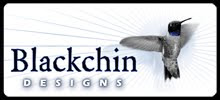 Seeing Red: A Vermilion Flycatcher at San Joaquin Wildlife Sanctuary
Seeing Red: A Vermilion Flycatcher at San Joaquin Wildlife SanctuaryMy winter break back home in California was everything I hoped it would be: I got treated to a birthday dinner at
my new favorite Los Angeles restaurant, my sisters and their spouses (and one very pampered nephew) converged on my parents' place for several days of eating, drinking, and gossip, and I got to catch up with some old friends and an old favorite birding spot.
Glenn and I met up with John and Joan at
San Joaquin Wildlife Sanctuary a few days after Christmas. Overhead, I heard the squeaky winter chorus of Cedar Waxwings in the nearly leafless sycamores, and the quacking of ducks—hundreds of them—off the ponds. Then there were more songs from my birding past; the shrieky squeal of Cassin's Kingbirds, the buzz and tail-snapping
thwip! of Anna's Hummingbirds, the chattering of Bushtits. San Joaquin looked, sounded, and smelled like home.
Just as my sisters and I immediately check out the fridge upon entering my parents' place, the four of us immediately set out to find all the good stuff that had been spotted recently at the marsh. The first bird we sought out and found was a bright male Vermilion Flycatcher that had been there for several days: it flitted about in the same area for about 20 minutes, allowing us good looks and lots of photo ops.
After we were done ogling the Vermilion, I kicked back and enjoyed the usual suspects, which were not so usual for me anymore: Say's Phoebes, Black Phoebes, yet more Cassin's Kingbirds, and that thing over there...mehh, Eastern Phoebe. Bo-ring.
Wait...I'm not in Florida. Eastern Phoebe. Irvine, California. Does. Not. Compute.
"Joan, I think that's an Eastern Phoebe!"
Joan, an experienced East Coast birder, agreed. "You should get a picture of it—someone reported one a while back but no one's been able to find it again."
But I only had my little point-and-shoot camera with me, and by time I got it out, the bird had taken off, never to be seen again. When Glenn caught up with us, we waited in vain for the mysterious bird to return. Why couldn't it be a noisy, in-your-face pain-in-the-butt bird like the Eastern Phoebes in Gainesville?
Whatever. There was still a lot more to see. We got a dizzying inventory of ducks, including some that I had not seen regularly there, such as Wood Ducks, Redheads, Canvasbacks, and Ring-necked Ducks. As we were about to break for lunch, we ran into a couple who said they had just seen a female Common Goldeneye off the footbridge behind Pond C. We were there in a flash—and the Goldeneye was waiting for us:

This made it a Dozen Duck Day. On our way back out to the parking lot (our lunch plans got kicked back an hour by that Common Goldeneye), we spotted someone taking photos of something in the far end of the lower parking lot. We crept closer to see what it was: a Burrowing Owl!

After lunch across the street at Fatburger, we returned to the marsh. By now, it was almost three; there would be about two more hours of daylight. We found a Sora and a Virginia Rail, watched a Peregrine Falcon fly in and land on a tall post, and a while later, watched a White-tailed Kite dive-bombing the Peregrine in an unsuccessful attempt to dislodge him from his perch.
At sunset, we watched a flock of White-faced Ibises circle the front ponds before settling in for the evening. We hugged our friends goodbye until our next trip west, and headed back up to Los Angeles. Once home, I reported my Eastern Phoebe sighting to
Orange County Birding, and was met with polite silence. No documentation, no bird!
No matter. It was the other birds that made the day memorable. As for that Eastern Phoebe—I can step outside my place in Gainesville and get one within 10 minutes. So there.
























